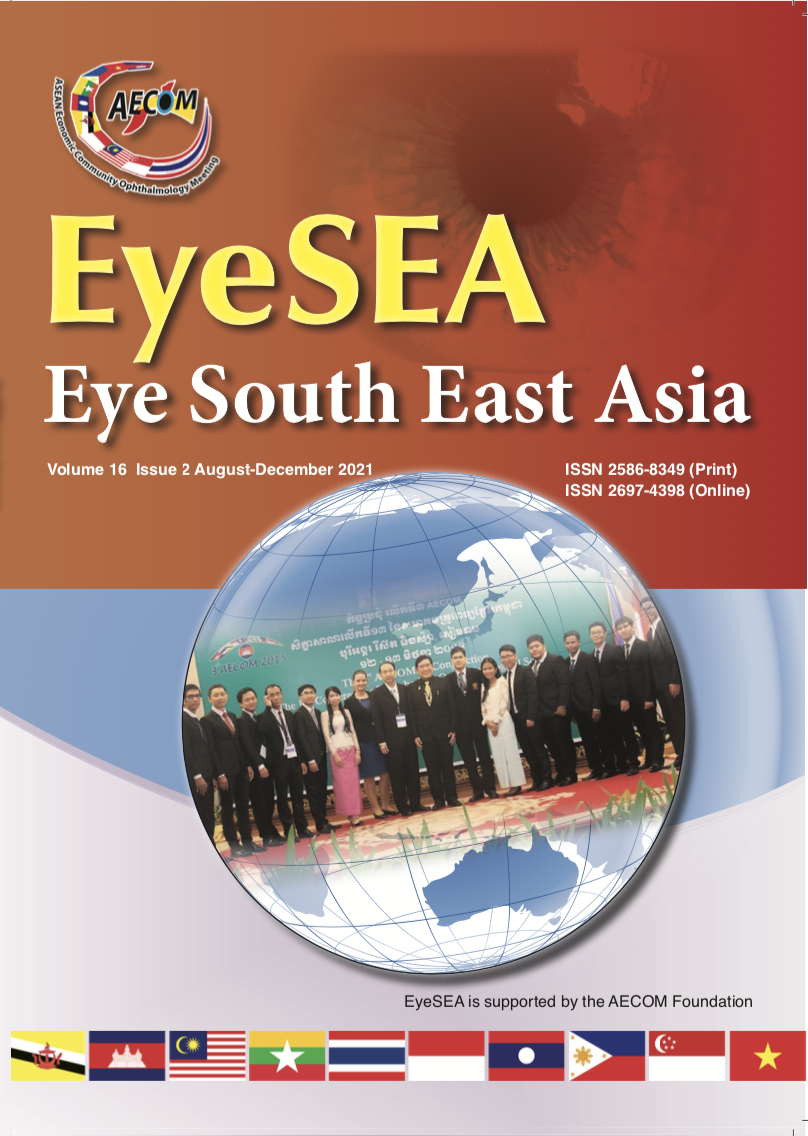Severe complicated corneal ulcer resulting in loss of the eye
Main Article Content
Abstract
Purpose: To identify the prevalence of complicated corneal ulcers resulting in evisceration or enucleation and review predisposing factors, clinical manifestations and microbiological characteristics in complicated corneal ulcers.
Methods: A retrospective review of cases with clinically diagnosed corneal ulcers who underwent evisceration or enucleation at Thammasat University Hospital was performed from medical records, over a period of 5 years between January 2015 and December 2019.
Results: A total of 41 patients were included in this study. Thirty-three patients (80.49%) underwent evisceration, and 8 patients (19.51%) underwent enucleation. The mean age was 63.54 ± 15.82 years. Most patients were male (60.96%). The average duration of onset of symptoms to prompt treatment by a primary doctor was 4.90 ± 4.07 days, and the average duration of prompt treatment to evisceration or enucleation was 23.17 ± 25.30 days. Initial BCVA at presentation varied from 20/200 to no light perception (no PL) with the majority reporting hand motion (HM). Most patients had a history of ocular trauma (53.66%) but only one patient (2.44%) had a history of contact-lens use. Most of the patients had no associated ocular disease. Hypertension and diabetes mellitus were the most common systemic underlying diseases. Pseudomonas aeruginosa (31.71%) and Fusarium species (14.63%) were the most causative organism of bacteria and fungi respectively.
Conclusion: Severe complicated corneal ulcers can lead to loss of the eye due to uncontrolled infection. Bacterial infection, especially by Pseudomonas aeruginosawas the most common cause and ocular trauma was the most common risk factor.
Ethics: This study was approved for ethical research in human with the human research ethics committee of Thammasat university, Thailand (Research ID: MTU-EC-OP-0-204/62).


